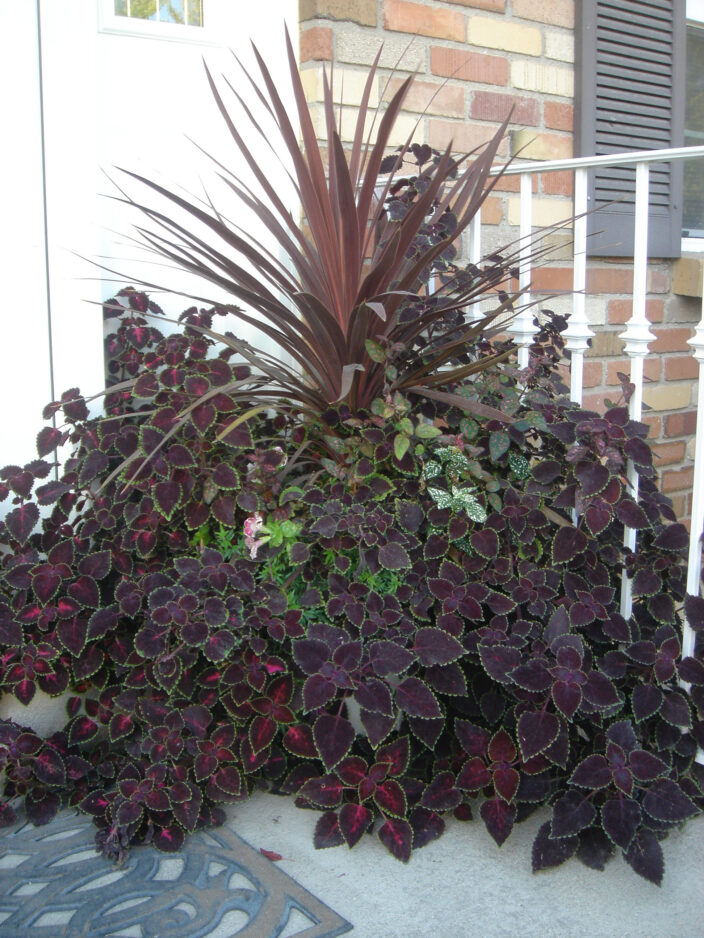Garden Help Desk: Not too late to make hanging basket for Mother’s Day
Question: I know I’m getting a late start, but I’d like to make a nice hanging basket for my mom instead of buying one. What is the best way to have something that looks good?
Answer: First things first, choose your container. Having the container in mind will help you to make better plant choices — whether it’s a simple plastic hanging pot or a large cocomat-lined ornamental basket. Knowing the size will help you know how many plants you need.
Next, skip the 4-pack or 6-pack bedding plants and go straight for the larger plants in 4-inch pots. You want your hanging basket to look nice and full in just two weeks, so you’ll need larger plants to fill in the space. Your goal is to have enough plants to just hide the soil from view. You should still be able to find nice plants like trailing petunias, sweet potato vine, lobelia, bacopa, trailing dichondra, lantana, verbena, and ivy geraniums for a sun-loving basket. For shade baskets look for fuchsias, begonias, coleus, impatiens, heuchera, ferns, and even spider plants, pothos and other indoor plants. Make sure the plants you choose all have the same sun/shade and watering needs.
Choose a high-quality potting soil that drains easily and fills your container about two-thirds full. If you know your mom will be putting her basket in a sunny or hot location, or in a spot that’s windy for part of the day, you can mix a soil moisture polymer into the soil to help the plants go a little longer between waterings. This is also the time to mix in a slow-release fertilizer to help the basket keep its good looks throughout the season.
Arrange and rearrange the plants on top of the soil until the placement looks good and then plant each plant in its place, adding or removing soil if you need to.
Finally, water in the basket well. If the soil has settled a bit, add enough soil to bring the level up to about an inch below the top of your basket. Put the basket in light shade or morning sun for a day or two and then move it to the right location for the plants you’ve chosen until it’s time to deliver your basket.
Question: What is the very best fertilizer for my lawn?
Answer: The only way to know which fertilizer is best for your lawn is to get a soil test. It’s not unusual for soils in our area to be high or very high in phosphorus and potassium, and lawns in soils like that need to be fertilized differently than lawns growing in soils with low or very low phosphorus and potassium. A soil test requires very little effort on your part and gives you the information you need for purchasing the best fertilizer for your lawn.
When you fertilize your lawn, only add what your lawn needs. Lawn fertilizer products have three numbers on the front label that represent the percentages of N-P-K in the bag. If your soil is high in phosphorus (P) or potassium (K), you’re better off fertilizing with only nitrogen (N). Some nitrogen leaches out of the soil over the season and needs to be replaced each year, but phosphorus isn’t likely to leach out of our clay soils and potassium also tends to stick around. While enough P and K in the soil is a good thing, more isn’t better. Choosing fertilizer products that contain only what your soil needs will also save you money and reduce fertilizer runoff.
Consider using a slow-release fertilizer in the spring. The beetles responsible for grubs in lawns prefer lush, frequently watered lawns when laying eggs. Rapidly growing, tender grass is very attractive to them. A slow-release fertilizer provides what a lawn needs for healthy growth without the lush, rapid growth that comes from a quick release of nitrogen. Lawns with slower, steady growth are also less susceptible to some of the common lawn diseases that we see in our area.









